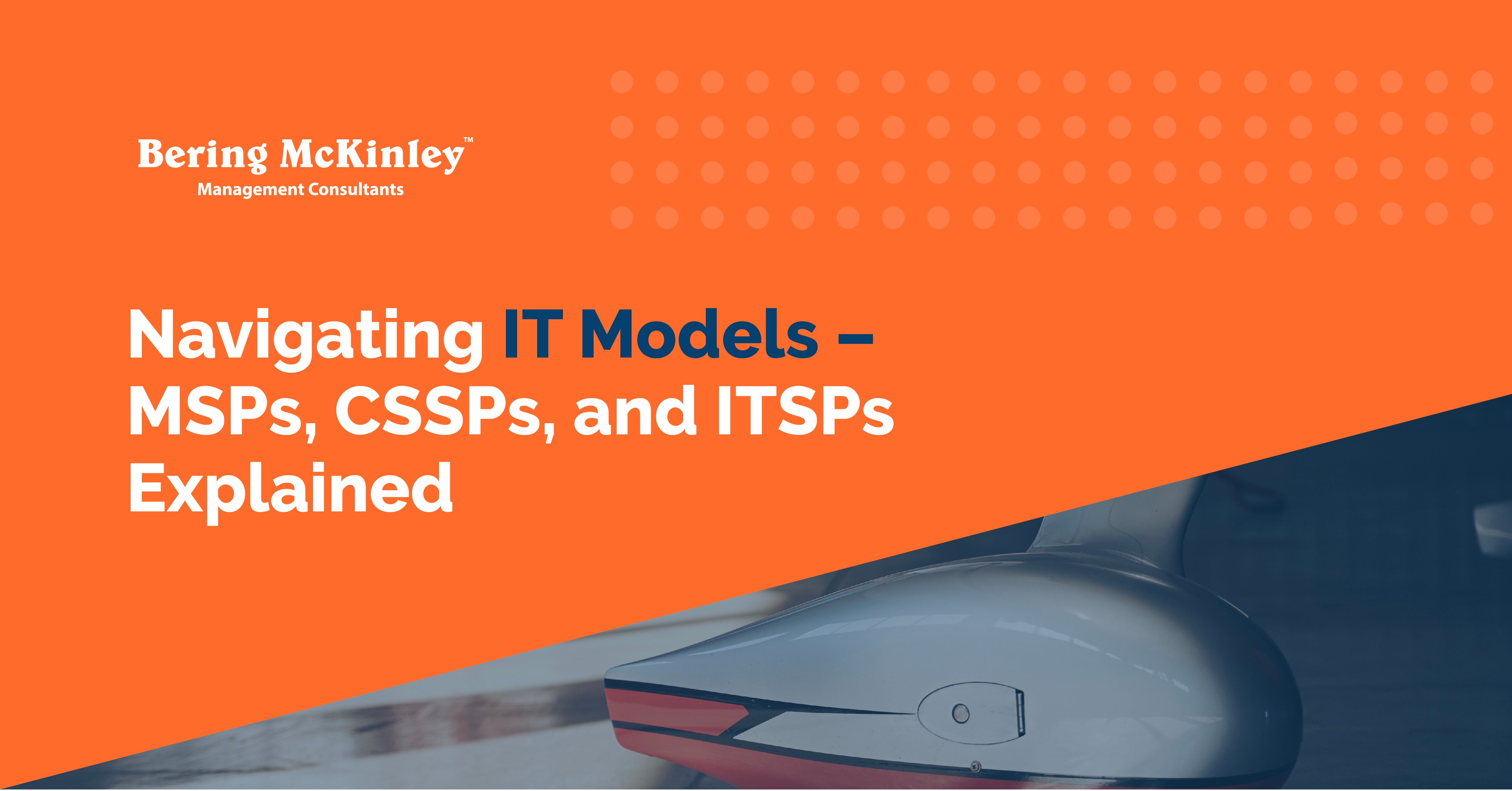2 min read
Navigating IT Models – MSPs, CSSPs, and ITSPs Explained
 Josh Peterson
:
Aug 7, 2024 3:26:17 PM
Josh Peterson
:
Aug 7, 2024 3:26:17 PM

With so many different IT companies constantly sprouting up daily, it can seem daunting to stand out in the competition.
To best reach your target audience, you need to first properly identify yourself as to what kind of IT company you are. By determining your classification, your customers will be able to identify how strong a fit your services are for their needs.
If you’re not exactly sure what type of IT company you want to be labeled as, don’t sweat it. We’ll walk you through the most common types of IT businesses that you can identify as.
What is an MSP?
Managed Service Providers Defined
Managed Service Providers (MSPs) remotely manage a customer's IT infrastructure and end-user systems. MSPs are typically proactive, aiming to identify and fix issues before they cause downtime.
Key Features of MSPs
MSPs offer various services, including help desk support, network monitoring, cybersecurity, data backup, and disaster recovery. They usually operate on a subscription model, providing continuous support and management for a fixed monthly fee.
Benefits of Using an MSP
One of the major advantages of an MSP is its ability to provide around-the-clock support. This ensures that any issues are dealt with swiftly, minimizing downtime. Additionally, MSPs can save businesses money by reducing the need for in-house IT staff.
What is a CSSP?
Cyber Security Service Providers Explained
A Cyber Security Service Provider is a specialized entity that offers comprehensive security solutions to businesses. These providers leverage advanced tools and expertise to protect your organization from cyber threats. Think of them as your business's digital security guards, always looking for potential risks and ready to eliminate them before they cause harm.
Core Services Offered by CSSPs
CSSPs offer cybersecurity services like threat detection, real-time monitoring, and swift response. They conduct vulnerability assessments, address security weaknesses, and ensure compliance with regulations such as GDPR and HIPAA. CSSPs also provide managed security services, letting businesses focus on core activities while experts manage cybersecurity.
The Benefits of CSSPs
CSSPs safeguard sensitive data with strong encryption and access controls, boosting your business's reputation. While hiring a CSSP may appear expensive, it can prevent costly data breaches. They offer expertise, tools, and tailored security solutions that adapt to evolving threats.
What is an ITSP?
Understanding IT Solution Providers
IT Solution Providers (ITSPs) offer a broad range of IT services, including hardware, software, and networking solutions. They usually provide end-to-end services, from consultation and planning to implementation and ongoing support.
Key Offerings of ITSPs
ITSPs can supply and integrate hardware like servers, networking equipment, and software solutions such as enterprise resource planning (ERP) systems. They also offer consulting services to tailor solutions to specific business needs.
Advantages Becoming an ITSP
ITSPs offer a one-stop shop for all your IT needs. This can simplify the procurement process and ensure all IT infrastructure components work seamlessly. They provide a holistic IT management approach, covering hardware and software.
Choosing the Right Model for Your Business
Understanding the differences between MSPs, CSSPs, and ITSPs is crucial for making informed decisions about your IT company’s strategy. Each provider model offers unique benefits you can market to your customers, from proactive IT management and security to comprehensive IT solutions.
If you need more help deciding which classification is best for your business, don’t sweat it. Our team of consultants at Bering McKinley will help you figure out which model is best for your goals and keep you on track using our decades of experience.

Be Fluent In Your Employees’ Communication Style
Try watching a TED talk in a language you don’t understand. The speaker could be a Nobel Peace Prize winner, providing insights that could positively...
Mastering IT Help Desk for Career Growth
Have you been considering a career in IT or are you already working in the field? Regardless of where you stand, it's essential to understand the...

![[CTA] Navigating IT Models – MSPs, CSSPs, and ITSPs Explained](https://beringmckinley.com/hs-fs/hubfs/%5BCTA%5D%20Navigating%20IT%20Models%20%E2%80%93%20MSPs%2c%20CSSPs%2c%20and%20ITSPs%20Explained-02.jpg?width=860&height=225&name=%5BCTA%5D%20Navigating%20IT%20Models%20%E2%80%93%20MSPs%2c%20CSSPs%2c%20and%20ITSPs%20Explained-02.jpg)
